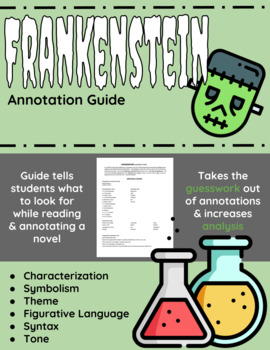

Klinger positively covers the pages of this handsome volume with assiduously-marshaled ancillary information, at such lengths and in such detail that by rights readers should very quickly be wanting him to put a sock in it and leave them alone so they can get to reading the book. Darwin,” a mention that might mislead the general reader into thinking Charles Darwin when the author meant his less brilliant but more interesting grandfather Erasmus Darwin.

And despite the fact that even approaching its bicentennial Frankenstein still retains its power to pull readers in, move them around, and repulse and fascinate them in equal measure, there are actually quite a few places where the annotator's art comes in handy – starting on the very first page with the book's mention of a certain “Dr. The annotations that fill this volume are universally delightful, shedding light and adding fascination without ever veering into droning instruction or condescension. This makes the task of assembling an annotated edition somewhat tricky, and luckily for readers of The New Annotated Frankenstein, Leslie Klinger has long since mastered the task, having produced not only Norton's excellent annotated version of Dracula but also having spent a good many years annotating the living daylights out of Sherlock Holmes. In other words, Frankenstein, like so many other entries in this and every other line of annotated classics, fundamentally requires no annotations. And all of this fascination is of course inherent it was in perfect working order long before anybody thought to adapt the story to stage or screen. When the climactic icebound confrontation between creation and creator finally takes place, it would require a weak reader indeed to look away until the last word. When the monster lunges through the human world, learning with incredible speed but of course never finding the acceptance he yearns for, we readers watch every disastrous misstep with held breath. When Victor Frankenstein creates his monster, we readers are right there alongside him for every melodramatic, thrilling word of Shelley's prose. Inspired by heady evenings of late-night conversations at Lord Byron's villa on the shore of Lake Geneva and then hammered out in long writing-days by, as Byron put it, “a girl not yet eighteen,” the novel tells the story of an egomaniacal scientist (the story takes place in the dark days before peer review), Victor Frankenstein, who creates a monstrous body from the discarded parts of many corpses and then animates the body, giving life to a fierce monster who would then progress with dizzying speed to the same combination of brilliance, histrionics, and daddy-issues that the book's author experienced for her entire young adulthood. A big, wonderfully-produced annotated edition of Newton's Principia would be a combination of invention and necessity: in an age when a statistical majority of tax-paying adults, when questioned, believe that the sun revolves around the Earth, printing an edition of the Principia with no explanatory notes would be the publishing equivalent of printing a 500-page block of FORTRAN with no explanatory notes – the fraction of a percentage of customers who could understand it unaided would be the last customers on Earth you'd want.īut the case is altered with something like Frankenstein. This is an odd thing in any case for any books, one-pound items composed of glue, paper, and pomposity, but it's just a bit extra-odd in the case of annotated classics. This line of annotated editions is an almost unbroken chain of triumphant successes – Klinger's own recent volume of Lovecraft, for instance, is something even die-hard Lovecraftians, known for their jittery, bug-eyed, mean-spirited finicky fussiness, must have embraced – and this Frankenstein volume shares the defining if elusive status of those earlier triumphs: it's what's known in the publishing industry as a “must-have.” The latest addition to the shelves of annotated classics is also the prettiest in quite a few seasons: The New Annotated Frankenstein, out from the Liveright imprint of WW Norton and edited by the indefatigable Leslie Klinger, sports a lovely, intricate, and richly green cover clearly designed to catch the eye of random bookstore browsers who might not know there's a new edition of Mary Shelley's seminal 1818 horror novel and might be convinced to want it.


 0 kommentar(er)
0 kommentar(er)
